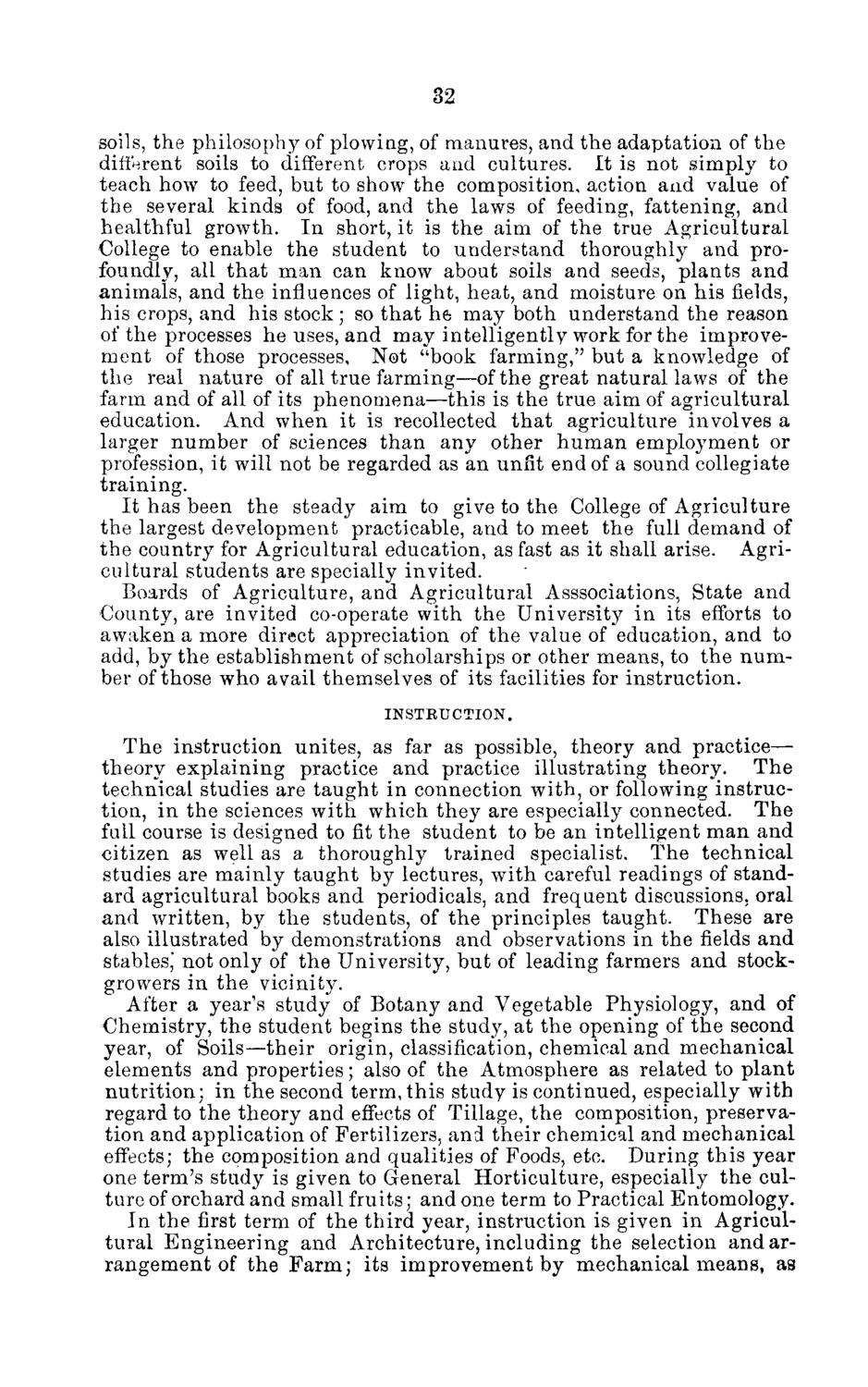| |
| |
Caption: Board of Trustees Minutes - 1876
This is a reduced-resolution page image for fast online browsing.

EXTRACTED TEXT FROM PAGE:
32 soils, the philosophy of plowing, of manures, and the adaptation of the different soils to different crops and cultures. It is not simply to teach how to feed, but to show the composition, action and value of the several kinds of food, and the laws of feeding, fattening, and healthful growth. In short, it is the aim of the true Agricultural College to enable the student to understand thoroughly and profoundly, all that man can know about soils and seeds, plants and animals, and the influences of light, heat, and moisture on his fields, his crops, and his stock; so that he may both understand the reason of the processes he uses, and may intelligently work for the improvement of those processes, Not "book farming," but a knowledge of the real nature of all true farming—of the great natural laws of the farm and of all of its phenomena—this is the true aim of agricultural education. And when it is recollected that agriculture involves a larger number of sciences than any other human employment or profession, it will not be regarded as an unfit end of a sound collegiate training. It has been the stead}' aim to give to the College of Agriculture the largest development practicable, and to meet the full demand of the country for Agricultural education, as fast as it shall arise. Agricultural students are specially invited. Boards of Agriculture, and Agricultural Asssociations, State and County, are invited co-operate with the University in its efforts to awaken a more direct appreciation of the value of education, and to add, by the establishment of scholarships or other means, to the number of those who avail themselves of its facilities for instruction. INSTRUCTION. The instruction unites, as far as possible, theory and practice— theory explaining practice and practice illustrating theory. The technical studies are taught in connection with, or following instruction, in the sciences with which they are especially connected. The full course is designed to fit the student to be an intelligent man and citizen as well as a thoroughly trained specialist. The technical studies are mainly taught by lectures, with careful readings of standard agricultural books and periodicals, and frequent discussions, oral and written, by the students, of the principles taught. These are also illustrated by demonstrations and observations in the fields and stables^ not only of the University, but of leading farmers and stockgrowers in the vicinity. After a year's study of Botany and Vegetable Physiology, and of Chemistry, the student begins the study, at the opening of the second year, of Soils—their origin, classification, chemical and mechanical elements and properties; also of the Atmosphere as related to plant nutrition: in the second term, this study is continued, especially with regard to the theory and effects of Tillage, the composition, preservation and application of Fertilizers, and their chemical and mechanical effects; the composition and qualities of Foods, etc. During this year one term's study is given to General Horticulture, especially the culture of orchard and small fruits; and one term to Practical Entomology. In the first term of the third year, instruction is given in Agricultural Engineering and Architecture, including the selection and arrangement of the Farm; its improvement by mechanical means, as
| |